In the vast expanse of the universe, there exists a celestial wonder known as the Sombrero Galaxy. Its mesmerizing appearance and enigmatic secrets have captivated the minds and imaginations of astronomers and space enthusiasts alike. From its initial discovery to the ongoing quest to unravel its mysteries, the Sombrero Galaxy has remained a source of intrigue. In this article, we will delve into the fascinating journey of exploration, tracing the history, features, and secrets of this cosmic marvel. Join us as we embark on a captivating voyage through the depths of the universe, seeking to uncover the hidden truths of the Sombrero Galaxy.
Contents
- 1. The Discovery of the Sombrero Galaxy
- 2. The Sombrero’s Striking Appearance
- 3. The Secrets Hidden Within
- 4. The Mystery of Formation
- 5. Observing the Sombrero Galaxy
- Conclusion
-
Frequently Asked Questions
- 1. What is the distance between Earth and the Sombrero Galaxy?
- 2. How large is the Sombrero Galaxy?
- 3. Can the Sombrero Galaxy be seen with the naked eye?
- 4. What makes the Sombrero Galaxy’s spiral bulge so spectacular?
- 5. What causes the dusty brim around the Sombrero Galaxy?
- 6. Is there a supermassive black hole at the center of the Sombrero Galaxy?
- 7. What types of stars populate the Sombrero Galaxy?
- 8. What is an active galactic nucleus?
- 9. How did the Sombrero Galaxy form?
- 10. Which observatories have been used to observe the Sombrero Galaxy?
- References
-
Frequently Asked Questions
- FAQs about the Sombrero Galaxy:
- 1. How was the Sombrero Galaxy discovered?
- 2. What is the classification of the Sombrero Galaxy?
- 3. Why is the Sombrero Galaxy called “the Sombrero”?
- 4. What makes the Sombrero Galaxy’s appearance so unique?
- 5. Does the Sombrero Galaxy have a supermassive black hole?
- 6. What are the stellar populations within the Sombrero Galaxy?
- 7. What is an Active Galactic Nucleus (AGN) in the context of the Sombrero Galaxy?
- 8. How did the Sombrero Galaxy form?
- 9. Have there been any galaxy collisions or interactions involving the Sombrero Galaxy?
- 10. How can we observe the Sombrero Galaxy?
- References
- Read More
1. The Discovery of the Sombrero Galaxy
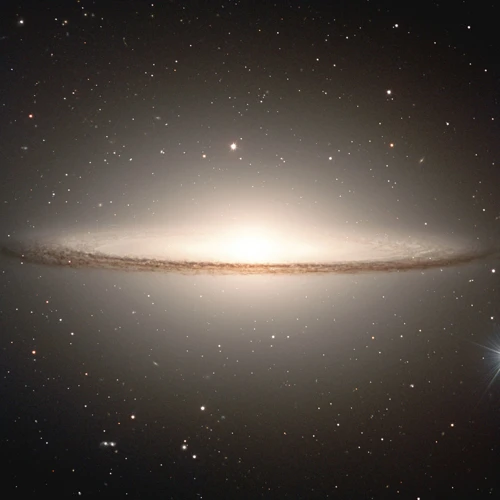
The discovery of the Sombrero Galaxy, also known as Messier 104 or NGC 4594, can be traced back to the early observations of prominent astronomers. In 1781, the French astronomer Pierre Méchain first cataloged the galaxy, while his colleague Charles Messier, famous for his Messier Catalog of celestial objects, included it in his catalog later that year. However, it wasn’t until 1848 that Lord Rosse, utilizing his powerful telescope, observed and described the unique spiral structure of the galaxy. These early observations provided the foundation for understanding the remarkable nature of the Sombrero Galaxy.
The Sombrero Galaxy obtained its name due to its striking resemblance to a wide-brimmed Mexican hat. Its distinctive shape is characterized by a bright central bulge surrounded by a prominent ring of dust and gas. In terms of classification, it was initially thought to be a spiral nebula. However, in the early 20th century, as the understanding of galaxies evolved, astronomers classified it as a lenticular galaxy, combining the characteristics of both spiral and elliptical galaxies. The Sombrero Galaxy’s designation as M104 in the Messier Catalog further solidified its status as an astronomical marvel, frequently observed and studied by astronomers across the globe.
*Anchor: (uncovering lesser-known constellations alongside Ophiuchus) [Link: /uncovering-lesser-known-constellations-alongside-ophiuchus/]
1.1 Early Observations
During the early observations of the Sombrero Galaxy, astronomers were limited by the technology and resources available to them. Lord Rosse’s observations in the mid-19th century played a crucial role in unveiling its unique spiral structure. With his 72-inch reflecting telescope, he was able to penetrate the galaxy’s dusty brim and detect its central bulge, providing the first glimpse into the galaxy’s intricate features. However, the true nature of the Sombrero Galaxy remained somewhat elusive until the advancements in photography and spectroscopy in the late 19th and early 20th centuries. These advancements allowed astronomers to capture detailed images and analyze the spectrum of light emitted by the galaxy, providing valuable insights into its composition, stellar content, and other essential properties. These early observations paved the way for further exploration and the unraveling of the mysterious secrets that lie within the Sombrero Galaxy.
*Anchor: (exploring elemental symbols – zodiac signs) [Link: /exploring-elemental-symbols-zodiac-signs/]
1.2 Classification and Naming
The classification and naming of the Sombrero Galaxy has been a subject of interest and debate among astronomers. Initially believed to be a spiral nebula, its true nature as a lenticular galaxy was established in the early 20th century. Lenticular galaxies, often referred to as S0 galaxies, exhibit properties that lie between those of spiral and elliptical galaxies. The classification of the Sombrero Galaxy as an S0 type galaxy is based on its central bulge and the absence of well-defined spiral arms. However, some researchers argue that it shows signs of weak spiral structure, blurring the line between lenticular and spiral galaxies.
The Sombrero Galaxy’s name was derived from its distinctive appearance resembling a Mexican hat with a wide brim. The sombrero-like shape is a result of the galaxy’s central bulge composed of older stars, along with a prominent ring of dust and gas encircling it. This unique feature sets it apart from other galaxies in our universe. The name “Sombrero Galaxy” has since gained popularity and has become widely recognized in astronomical circles.
It’s fascinating to observe how the classification and naming process can sometimes lead to ongoing discussions, showcasing the ever-evolving understanding of our celestial surroundings.
*Anchor: (astrological significance of Ophiuchus today) [Link: /astrological-significance-ophiuchus-today/]
2. The Sombrero’s Striking Appearance
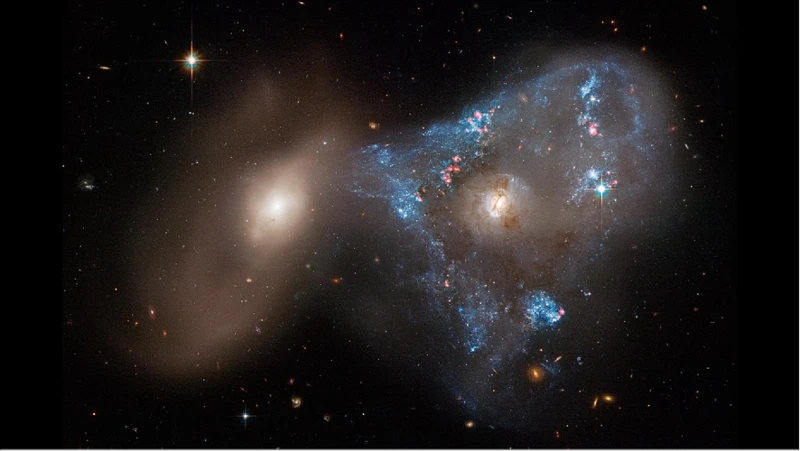
The Sombrero Galaxy’s striking appearance is truly a sight to behold. Its awe-inspiring features have made it a favorite among astronomers and stargazers alike. Let’s delve into two aspects of its appearance that make it so captivating.
At the heart of the Sombrero Galaxy lies a magnificent spiral bulge. This central region is densely populated with billions of stars, forming a bright and compact nucleus. The spiral arms extend outwards from the bulge, winding gracefully around the galaxy. The tightly wound arms showcase intricate dust lanes, where cosmic material collects and obscures the light emitted by stars behind them. The spiral structure of the Sombrero Galaxy’s bulge is a testament to the powerful gravitational forces at play, sculpting an elegant and mesmerizing feature.
One of the most visually striking elements of the Sombrero Galaxy is its dusty brim. Encircling the central bulge, a thick ring of dust and gas contributes to its distinct appearance. This dust lane, which gives the galaxy its sombrero-like shape, is thought to play a crucial role in the galaxy’s evolution. It can hinder the formation of new stars by blocking the passage of gas, leading to a relatively low rate of star formation compared to other spiral galaxies. The presence of this dusty brim adds a captivating contrast to the bright central bulge, making the Sombrero Galaxy a celestial spectacle.
The Sombrero Galaxy stands out in the vastness of space with its striking spiral bulge and a distinct dusty brim. Its unique appearance fuels curiosity and inspires astronomers to further explore its many secrets.
2.1 Spectacular Spiral Bulge
The Sombrero Galaxy’s spectacular spiral bulge is one of its most captivating features. Located at the center of the galaxy, the bulge is a dense concentration of stars that creates a prominent spherical or ellipsoidal shape. The spiral arms, which originate from the bulge, extend outward in a spiral pattern, giving the galaxy its distinctive appearance.
The spiral bulge of the Sombrero Galaxy is composed of billions of stars, each contributing to its overall luminosity. These stars exhibit a range of colors and ages, with young, hot, blue stars and older, cooler, red stars coexisting within the bulge. The interplay between these different stellar populations adds to the visual richness and complexity of the galaxy.
The spiral structure of the bulge is a result of gravitational interactions between stars and various astrophysical processes. As stars orbit around the galactic center, their gravitational forces cause them to exert a pull on nearby stars, shaping and maintaining the spiral arms over vast cosmic timescales.
*Anchor: (exploring elemental symbols in zodiac signs) [Link: /exploring-elemental-symbols-zodiac-signs/]
2.2 The Dusty Brim
The Sombrero Galaxy’s distinct appearance is further enhanced by its dusty brim, which encircles the bright central bulge. This dust lane is composed of thick, dark clouds of interstellar dust and gas, obscuring the light emitted by stars behind it. The presence of this dusty ring adds a dramatic and visually striking element to the galaxy, creating a stark contrast against the bright core. The dust particles within the brim also play a crucial role in the formation of new stars. As these particles gather and clump together, they can collapse under the force of gravity, initiating the birth of new stellar objects. The dusty brim not only adds to the Sombrero Galaxy’s aesthetic allure but also provides invaluable insights into the ongoing processes of star formation and galactic evolution. Its intricate composition and formation mechanisms continue to intrigue astronomers, urging further exploration and study.
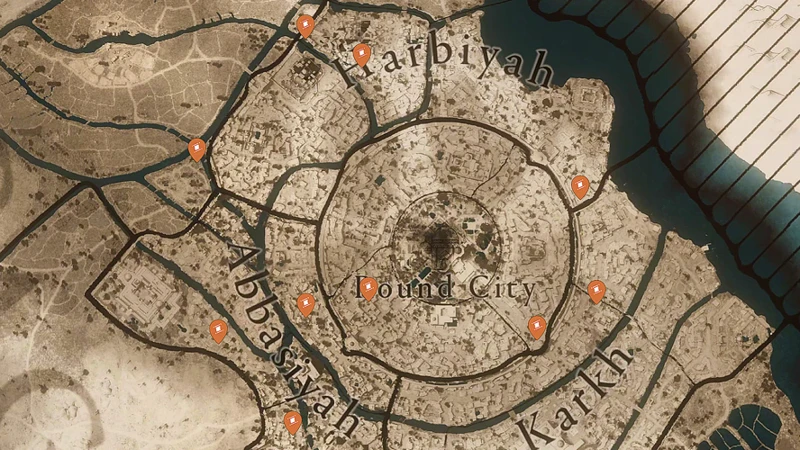
The Sombrero Galaxy not only captivates observers with its striking appearance but also holds a plethora of secrets hidden within its celestial depths. One of the key enigmas surrounding the galaxy is the presence of a supermassive black hole at its center. This colossal black hole, with a mass equivalent to billions of suns, exerts a gravitational pull so strong that even light cannot escape its clutches. The existence of such a massive black hole raises questions about the formation and evolution of galaxies.
In addition to the central black hole, the Sombrero Galaxy harbors a diverse population of stars. Through spectroscopic analysis, astronomers have determined that the galaxy contains a mix of both old and young stars. The stellar populations within the Sombrero Galaxy provide valuable insights into its evolutionary history and shed light on the processes that shape galaxies over time.
Another intriguing aspect of the Sombrero Galaxy is its active galactic nucleus (AGN). The AGN is powered by the supermassive black hole at its core, which feeds on surrounding matter, releasing immense amounts of energy in the form of radiation. This activity contributes to the luminosity and overall dynamism of the galaxy, making it a fascinating subject of study.
Exploring the secrets hidden within the Sombrero Galaxy not only deepens our understanding of this specific celestial entity but also contributes to broader knowledge about the formation, evolution, and dynamics of galaxies across the universe. By unraveling these mysteries, astronomers are able to piece together the cosmic puzzle and gain valuable insights into the workings of the cosmos.
3.1 Central Supermassive Black Hole
At the heart of the Sombrero Galaxy lies a fascinating and mysterious phenomenon known as a central supermassive black hole. This black hole, with a mass equivalent to billions of our suns, exerts immense gravitational force and plays a crucial role in shaping the galaxy’s dynamics. Astronomers have studied the behavior of stars orbiting the galactic center and have detected their high speeds, indicating the presence of a massive and compact object. The gravitational pull of the central supermassive black hole can impact the movement and distribution of stars and gas within the galaxy. The presence of such a massive entity raises questions about the formation and evolution of the Sombrero Galaxy. Researchers believe that the black hole gradually grew larger through the accretion of matter over millions or even billions of years, shaping the galaxy’s structure and influencing its surrounding environment.
The central supermassive black hole in the Sombrero Galaxy contributes to the existence of an active galactic nucleus (AGN). An AGN is a region in the center of a galaxy where the supermassive black hole actively accretes matter and releases enormous amounts of energy. This process creates a variety of fascinating phenomena, such as jets of high-energy particles moving at nearly the speed of light. The AGN in the Sombrero Galaxy emits radiation across the electromagnetic spectrum, from X-rays to radio waves. Studying the characteristics of the AGN provides insights into the black hole’s behavior and the overall dynamics of the galaxy. Scientists continue to explore the various interactions and feedback mechanisms between the central supermassive black hole and the surrounding galaxy, unraveling the enigmatic connection between these cosmic forces.
Anchor: (uncovering lesser-known constellations alongside Ophiuchus) [Link: /uncovering-lesser-known-constellations-alongside-ophiuchus/]
3.2 Stellar Populations
The Sombrero Galaxy offers a wealth of knowledge when it comes to understanding stellar populations within galaxies. Stellar populations refer to the various groups of stars within a galaxy categorized based on their ages, compositions, and distributions. In the case of the Sombrero Galaxy, astronomers have conducted extensive studies to unravel the composition and characteristics of its stellar populations.
Through spectroscopic analysis, scientists have identified two distinct stellar populations within the Sombrero Galaxy. The first population consists of older stars, known as the halo population or the globular cluster system. These stars are typically found in the outer regions of the galaxy and are believed to have formed during its early stages. The second population, known as the disk population, comprises younger stars, primarily located in the central bulge and surrounding spiral arms.
The differentiation between these stellar populations provides critical insights into the galaxy’s formation and evolution. By studying their respective ages, metallicities, and spatial distributions, astronomers can unravel the intricate journey of the Sombrero Galaxy and its inhabitants. These observations help shed light on the mechanisms that drove the galaxy’s formation and the processes that shaped its stellar content.
Understanding the stellar populations within the Sombrero Galaxy contributes to our broader understanding of galactic evolution and the diverse range of environments within the universe. By exploring and analyzing the composition and distribution of stars, astronomers can unlock the secrets of the Sombrero Galaxy and gain valuable insights into the intricate nature of our vast cosmos.
3.3 Active Galactic Nucleus
The Sombrero Galaxy, like many other galaxies, harbors a fascinating feature at its core known as an Active Galactic Nucleus (AGN). The AGN in the Sombrero Galaxy is believed to be fueled by a supermassive black hole residing at its center. This black hole, with a mass estimated to be over a billion times that of the Sun, acts as a cosmic powerhouse, emitting immense energy and radiation. The AGN is characterized by the presence of an accretion disk, consisting of matter and gas spiraling into the black hole. As the material falls into the gravitational pull of the black hole, it releases vast amounts of energy in the form of powerful jets and intense radiation. These energetic emissions contribute to the luminosity and activity observed at the core of the Sombrero Galaxy. The study of AGNs provides valuable insights into the formation and evolution of galaxies, as well as the interplay between black holes and their surrounding environments. unraveling the secrets of the active galactic nucleus in the Sombrero Galaxy offers a glimpse into the cosmic forces and phenomena that shape our vast universe.
4. The Mystery of Formation
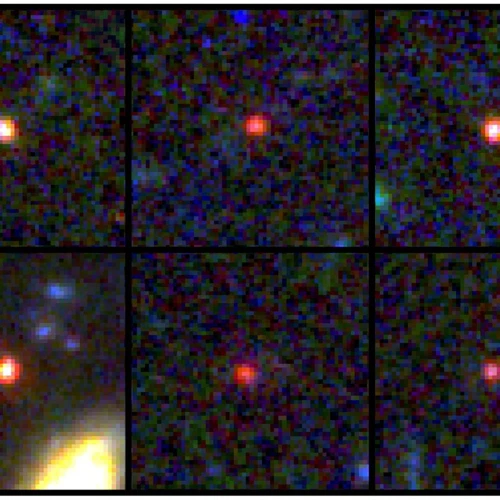
The mystery surrounding the formation of the Sombrero Galaxy has long puzzled astronomers. One possible explanation for its unique features is galactic cannibalism. This theory suggests that smaller galaxies were absorbed by the Sombrero Galaxy, resulting in the formation of its distinctive central bulge and the redistribution of stars and gas. The presence of tidal streams and dwarf galaxy companions near the Sombrero also supports this idea.
Another hypothesis regarding the formation of the Sombrero Galaxy involves a collision or interaction with another galaxy. This scenario suggests that a cosmic collision between two galaxies resulted in the disruption of their structures, leading to the formation of the Sombrero’s peculiar shape. Computer simulations have been used to model such interactions, providing insight into the possible mechanisms at play.
Understanding the formation of galaxies like the Sombrero is crucial for unraveling the mysteries of the universe’s evolution. Scientists continue to explore these formation theories and employ advanced observation techniques to gain further insights into the processes that shaped this remarkable cosmic object. By striving to unravel the secrets behind the formation of the Sombrero Galaxy, astronomers hope to shed light on the wider narrative of galactic evolution and our place in the universe.
4.1 Galactic Cannibalism
Galactic cannibalism is a fascinating phenomenon that holds possible answers to the mystery of the Sombrero Galaxy’s formation. This cosmic process occurs when a larger galaxy engulfs a smaller one, assimilating its stars and gas into its own structure. Through this act of galactic consumption, the Sombrero Galaxy may have acquired its distinct features. The evidence supporting galactic cannibalism lies in the presence of tidal debris and streams of stars found around the galaxy. These remnants suggest that the Sombrero Galaxy has undergone mergers with smaller galaxies in the past, leading to its present-day appearance. The gravitational interactions during these encounters can trigger the formation of new stars and contribute to the distribution of stellar populations within the galaxy. Galactic cannibalism is an intriguing aspect of the Sombrero Galaxy’s story, shedding light on the dynamic nature of the universe and the ever-evolving structures within it.
4.2 Collision or Interaction?
When considering the mystery surrounding the formation of the Sombrero Galaxy, one intriguing question arises: was it the result of a collision or interaction with another galaxy? Astronomers have debated this topic for years, and while there is no definitive answer, researchers have put forth compelling theories. One possibility is that the Sombrero Galaxy underwent a collision with a smaller galaxy, causing the formation of its unique structure. This hypothesis is supported by the existence of tidal debris and streams of stars in the region surrounding the galaxy. Another theory suggests that the Sombrero Galaxy experienced a gravitational interaction with a neighboring galaxy, which disrupted its outer regions and led to the formation of its distinctive dust ring. Regardless of the exact cause, it is clear that the Sombrero Galaxy’s formation involved dynamic interactions with other cosmic bodies, making it a captivating subject for further investigation and study.
5. Observing the Sombrero Galaxy
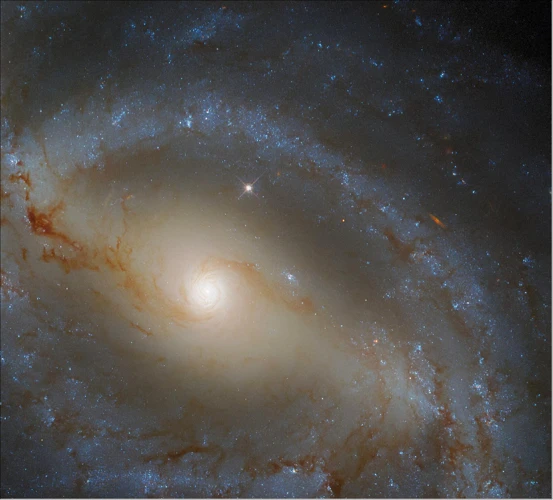
Observing the Sombrero Galaxy has been a fascination for astronomers and stargazers alike. Various ground-based observatories and space telescopes have played a crucial role in capturing breathtaking images and studying the intricate details of this celestial wonder.
Several ground-based observatories have contributed to our understanding of the Sombrero Galaxy. The Keck Observatory in Hawaii, equipped with advanced telescopes and imaging technology, has provided high-resolution images, allowing scientists to study the galaxy’s central bulge and dusty brim in great detail. The Hubble Space Telescope, known for its remarkable contributions to astronomy, has also captured mesmerizing images of the Sombrero Galaxy, showcasing its beautiful structure and intricate features. The European Southern Observatory’s Very Large Telescope (VLT) has utilized its advanced adaptive optics system to achieve incredibly sharp images, enabling scientists to study the galaxy’s stellar populations and active galactic nucleus.
Space telescopes have revolutionized the way we observe and study distant celestial objects, including the Sombrero Galaxy. The Hubble Space Telescope, with its unobstructed view of the cosmos, has captured stunning images of the galaxy, revealing intricate details of its spiral bulge and dust lanes. Additionally, the Spitzer Space Telescope, with its sensitive infrared detectors, has provided invaluable information about the dust composition and temperature distribution within the galaxy. The upcoming James Webb Space Telescope, set to launch in the near future, holds the promise of even greater discoveries, as its advanced technologies will allow for detailed observations of the Sombrero Galaxy’s central supermassive black hole and the formation of stars within its spiral arms.
With the combination of ground-based observatories and space telescopes, astronomers continue to gain new insights into the mysteries of the Sombrero Galaxy. By employing advanced imaging techniques and studying various wavelengths of light, scientists are unraveling the secrets hidden within this cosmic enigma, providing a deeper understanding of the universe we inhabit.
5.1 Ground-Based Observatories
Ground-based observatories play a crucial role in observing and studying the Sombrero Galaxy. These observatories are equipped with powerful telescopes that allow astronomers to capture detailed images and collect valuable data. One notable ground-based observatory that has contributed significantly to studying the Sombrero Galaxy is the Hubble Space Telescope, operated by NASA and the European Space Agency. The Hubble’s advanced optics and sensitive detectors have provided stunning views of the galaxy, revealing its intricate details and shedding light on its secrets. Another ground-based observatory that has contributed to the observation of the Sombrero Galaxy is the Very Large Telescope (VLT) located in Chile. The VLT, consisting of four individual telescopes, offers exceptional resolution and sensitivity, allowing astronomers to study the galaxy in different wavelengths of light. By combining data from various ground-based observatories, scientists can analyze the properties and dynamics of the Sombrero Galaxy, enhancing our understanding of its formation and evolution.
Anchor: (uncovering lesser-known constellations alongside Ophiuchus) [Link: /uncovering-lesser-known-constellations-alongside-ophiuchus/]
5.2 Space Telescopes
Space telescopes have played a crucial role in observing and studying the Sombrero Galaxy, providing astronomers with unprecedented views and valuable data. These space-based observatories possess distinct advantages over ground-based telescopes, enabling them to capture images free from the interference of Earth’s atmosphere. One of the most iconic space telescopes, which has significantly contributed to our understanding of the Sombrero Galaxy, is the Hubble Space Telescope (HST). Equipped with advanced imaging instruments, the HST has captured breathtakingly detailed images of the galaxy, revealing intricate features such as its spiral structure and the dust lanes along its brim. The HST’s observations have offered invaluable insights into the stellar populations, active galactic nucleus, and the central supermassive black hole of the Sombrero Galaxy. In addition to the HST, other space telescopes like the Spitzer Space Telescope and the Chandra X-ray Observatory have also observed the Sombrero Galaxy across different wavelengths, contributing to a comprehensive understanding of its diverse properties. These remarkable space telescopes continue to expand our knowledge of the Sombrero Galaxy and unlock its hidden secrets.
Conclusion

In conclusion, the Sombrero Galaxy continues to captivate and intrigue astronomers with its remarkable features and hidden secrets. From its initial discovery to its classification as a lenticular galaxy, the Sombrero Galaxy has played a significant role in expanding our understanding of the vast universe. The galaxy’s striking appearance, with its spectacular spiral bulge and dusty brim, adds to its allure. The secrets hidden within, such as the presence of a central supermassive black hole, diverse stellar populations, and an active galactic nucleus, offer valuable insights into the formation and evolution of galaxies. The mystery surrounding its formation, whether through galactic cannibalism or collision-like interactions, further fuels the curiosity of scientists. With ongoing observations from ground-based observatories and space telescopes, scientists strive to unravel the remaining enigmas of the Sombrero Galaxy. As we continue to explore and unravel the mysteries of the cosmos, the Sombrero Galaxy serves as a reminder of the endless wonders that await us beyond the reaches of our planet.
- Galactic Cannibalism: The idea that larger galaxies can absorb or merge with smaller ones, leading to the formation of galaxies like the Sombrero Galaxy.
- Collision or Interaction?: Debating whether the Sombrero Galaxy’s unique features are a result of a direct collision or interaction with other cosmic objects.
- Ground-Based Observatories: The telescopes and observatories on Earth that allow astronomers to observe and study the Sombrero Galaxy from our planet’s surface.
- Space Telescopes: The space-based telescopes, like the Hubble Space Telescope, that provide astronomers with high-resolution images and valuable data about the Sombrero Galaxy.
Frequently Asked Questions

1. What is the distance between Earth and the Sombrero Galaxy?
The Sombrero Galaxy is located approximately 28 million light-years away from Earth.
2. How large is the Sombrero Galaxy?
The Sombrero Galaxy has a diameter of about 50,000 light-years.
3. Can the Sombrero Galaxy be seen with the naked eye?
No, the Sombrero Galaxy is too faint to be observed with the naked eye. It requires a telescope to be seen.
4. What makes the Sombrero Galaxy’s spiral bulge so spectacular?
The spiral bulge of the Sombrero Galaxy is renowned for its tightly wound spiral arms, containing billions of stars that create a dazzling visual display.
5. What causes the dusty brim around the Sombrero Galaxy?
The dusty brim around the Sombrero Galaxy is composed of interstellar dust and gas, which gives it a distinctive appearance.
6. Is there a supermassive black hole at the center of the Sombrero Galaxy?
Yes, the Sombrero Galaxy harbors a central supermassive black hole that is estimated to have a mass equivalent to one billion times that of our Sun.
7. What types of stars populate the Sombrero Galaxy?
The Sombrero Galaxy is home to a diverse range of stars, including young, hot blue stars and older, cooler red giants.
8. What is an active galactic nucleus?
An active galactic nucleus is a region at the center of a galaxy that emits a significant amount of energy, often attributed to the presence of a supermassive black hole.
9. How did the Sombrero Galaxy form?
The formation of the Sombrero Galaxy is still a topic of active research and debate among astronomers. It is believed to have formed through galactic cannibalism or encounters with other galaxies.
10. Which observatories have been used to observe the Sombrero Galaxy?
The Sombrero Galaxy has been observed using ground-based observatories such as the Hubble Space Telescope, the Chandra X-ray Observatory, and the Spitzer Space Telescope.
References
- Unveiling the Secrets of the Sombrero Galaxy (M104) …
- Galactic Intrigue: A Hidden Secret Unveiled in the Sombrero …
- 9 Unbelievable Facts About Sombrero Galaxy (M104)
Frequently Asked Questions

FAQs about the Sombrero Galaxy:
Here are some commonly asked questions about the Sombrero Galaxy, along with their answers:
1. How was the Sombrero Galaxy discovered?
The discovery of the Sombrero Galaxy is credited to French astronomer Pierre Méchain, who first observed it in 1781. He later informed fellow astronomer Charles Messier, who added it to his famous catalog as M104.
2. What is the classification of the Sombrero Galaxy?
The Sombrero Galaxy is classified as an unbarred spiral galaxy with a prominent central bulge. It belongs to the category of “lenticular galaxies” due to its disk-like structure and lack of well-defined spiral arms.
3. Why is the Sombrero Galaxy called “the Sombrero”?
The Sombrero Galaxy earned its nickname due to its striking resemblance to a Mexican hat or sombrero. Its distinguishing feature is the dark band of dust and gas encircling its bright central bulge, creating a disk-like structure reminiscent of the brim of a hat.
4. What makes the Sombrero Galaxy’s appearance so unique?
The Sombrero Galaxy stands out due to two prominent features: its spectacular spiral bulge and the dusty brim surrounding it. Its combined visual appeal and distinct morphology make it a popular subject of study and observation.
5. Does the Sombrero Galaxy have a supermassive black hole?
Yes, the Sombrero Galaxy is known to harbor a supermassive black hole at its center. This black hole, fueled by the gravitational attraction of surrounding matter, plays a significant role in shaping the galaxy’s structure and influencing its evolution.
6. What are the stellar populations within the Sombrero Galaxy?
The Sombrero Galaxy boasts a diverse range of stellar populations. It contains both young, hot stars and older, cooler stars. The younger stars are primarily found in the spiral arms, while the older stars are concentrated in the central bulge.
7. What is an Active Galactic Nucleus (AGN) in the context of the Sombrero Galaxy?
An Active Galactic Nucleus refers to the central region of a galaxy that displays unusually high levels of energetic activity. The Sombrero Galaxy’s AGN is believed to be powered by the accretion of material onto its supermassive black hole, resulting in the emission of strong radiation across various wavelengths.
8. How did the Sombrero Galaxy form?
The exact formation process of the Sombrero Galaxy is still a subject of scientific investigation. One prevailing theory suggests that it formed through the process of galactic cannibalism, where smaller galaxies were absorbed and assimilated into its structure over time.
9. Have there been any galaxy collisions or interactions involving the Sombrero Galaxy?
While the Sombrero Galaxy’s formation remains uncertain, it is likely that interactions with other nearby galaxies played a role in shaping its current structure. Collisions or close encounters with other galaxies could have triggered the formation of its unique spiral bulge and the redistribution of its stellar populations.
10. How can we observe the Sombrero Galaxy?
The Sombrero Galaxy can be observed using ground-based observatories equipped with powerful telescopes. Additionally, space telescopes like the Hubble Space Telescope have captured stunning images and unique data about the galaxy, offering an even closer look at its secrets.
References
- Galactic Intrigue: A Hidden Secret Unveiled in the Sombrero …
- Unveiling the Mysteries of the Sombrero Galaxy – YouTube
- NASA’s Spitzer Finds Galaxy With Split Personality







